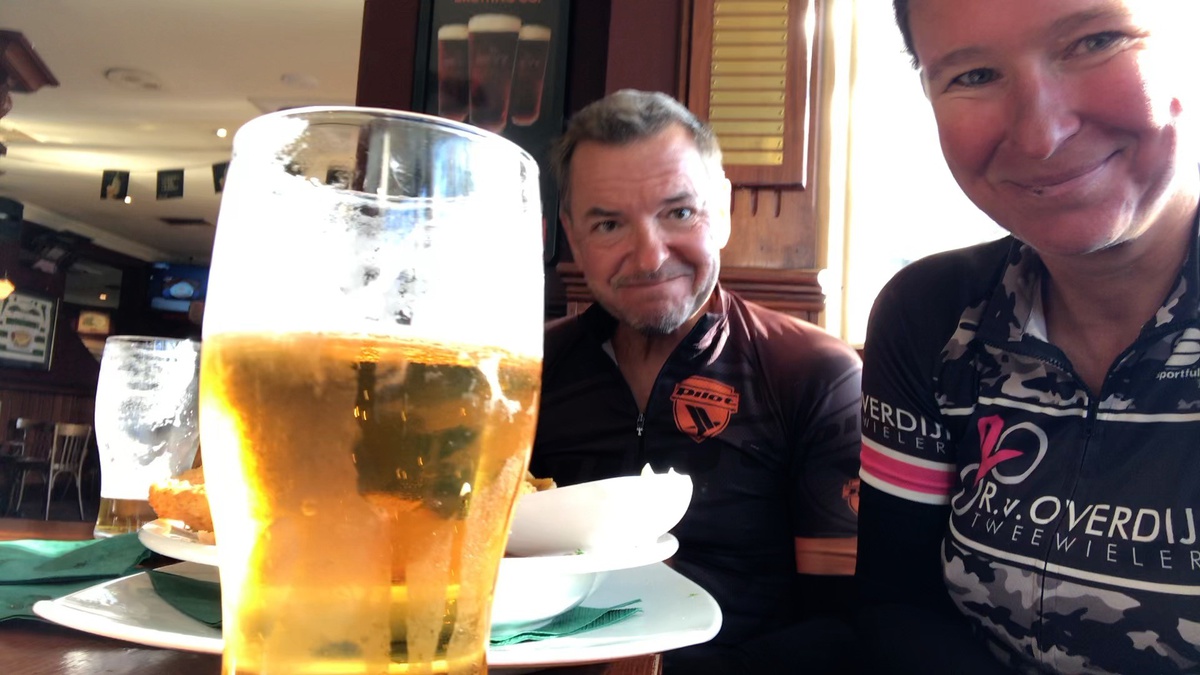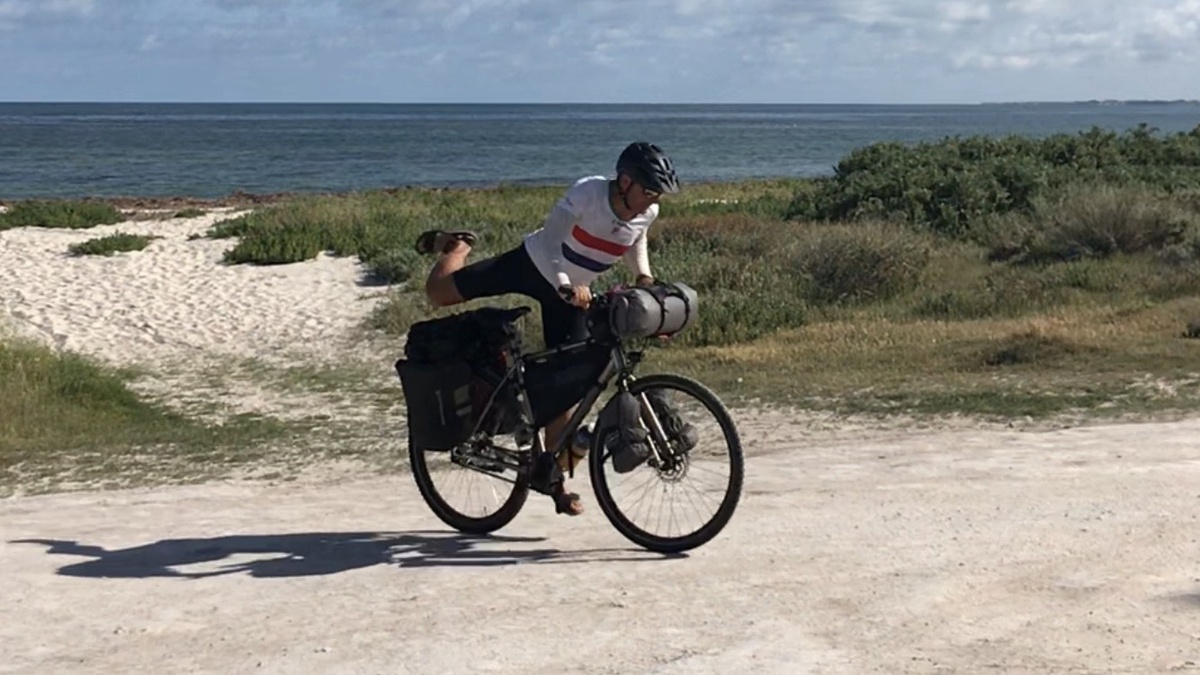
What a super nice time we have at the campsite of Warmshowers hosts Nic and Donna. Unfortunately the hosts themselves are not there, but in the camp kitchen we meet Nicky and Inge, Vera and Rosa (all nice Dutch ladies). On the second morning, cycling Bob joins us. We regularly met him since Port Hedland, about 1000 km ago. Today we provide dinner and he provides the desert.
On Friday the 13th and with full moon we pack our bags and make a big mistake, but it may not turn out badly in the context of expectation management: we check the weather forecasts and it doesn’t look good. Plenty of headwind straight from the south and it’s gonna be very hot, and that for at least three or four days and that is exactly how long it takes to get the next village.
When we have been struggling for 9 kilometers from the town center of Carnarvon, we come across a sign at a turnoff saying “town center: 6 kilometers”. That’s not funny. We forgot to navigate because there has been only one road for so long, and we have failed to check how to leave this village. But okay, what are 3 kilometers out of 126 kilometers, today’s day distance? Not that much in the early morning but fighting the wind in the end of the day, it is quite a lot!
Continue cycling on the boring highway heading south from Carnarvon with a hot humid head wind, under attack by countless flies and soaking wet with sweat, we realize that we have been misled three times:
Early in the morning, Roelie hits the brakes and calls against the wind in Harry to do the same. There is a so-called Thorny devil on the road, a broad-shouldered lizard with sturdy spines. To prevent this little devil from being added to the long list of roadkills, we guide him to the roadside. It is not going fast: when the beast gets threatened, it doesn’t flee, but stiffen. So too this ugly little one . After that some movement comes in, but he wobbles for the protection of the bicycle tire. He almost sits under it. Okay, so it’s not only slow but also a bit stupid. With the extra help of a fiber cloth we still get him to reach the roadside. Feels good, saving such a life. The last time we escorted a beast across the road, a snake in Indonesia, we were shouted at by a car driver, because he was in a rush.
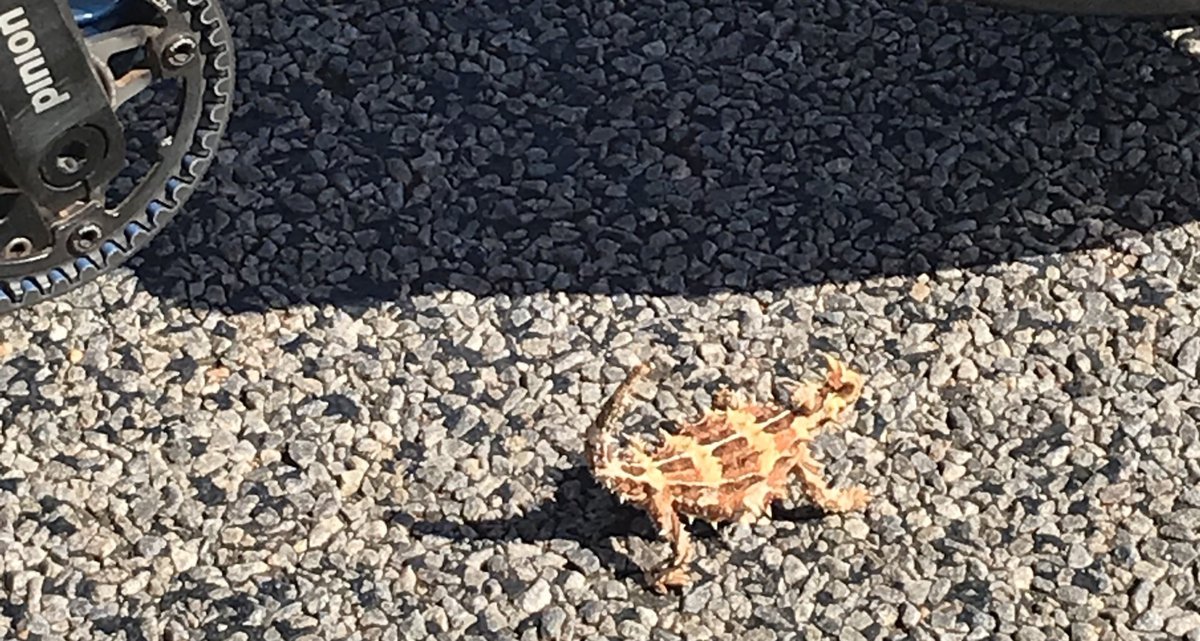
Due to the invasion of flies at every stop, we make a kind of ‘pitstop’ to top up water water. Only at Edaggee Rest Area we do take some time for a little break. The fly nets are pulled over our head to at least safeguard that body part from the hassle. Immediately a large tent catches our eyes, for the simple reason that you never see a tent on a rest area. The female owner of the tent quickly comes to us with a jug of chilled water. “You must be very warm” and she offers us iced coffee too. She says that she camped here four years ago and that her long-haired cat Ruby was shocked by a wild animal and has fled. Since then, she has been coming here from Adelaide to camp for three weeks every year in search of Ruby. People from this area told her that they have seen the cat and if we see Ruby we can pass it on to the next roadhouse where her contact details are known. She has set traps and brings captive wild cats to the ranger. But still no reunion with Ruby.
With the little devil and the cat we have mentioned the two highlights of the 126 kilometers to Wooramel roadhouse. It is – besides the flies, the heat and the headwind – a very boring stage! Yet morality remains at an excellent level: once again we are proud of ourselves that we have completed this stage.
That good vibe surpasses the discomfort and therefore our plan for the next day is again one from the “hors category”: we will not stop at the Overlander roadhouse at approx 75 kilometers, but set our goal at the Billabong roadhouse at 125 kilometers.
Okay, we can be even shorter about this stage: boring, (far too) hot, flies-flies-and-again-flies and of course the damned hard and hot “hair dryer” that keeps blowing against us.

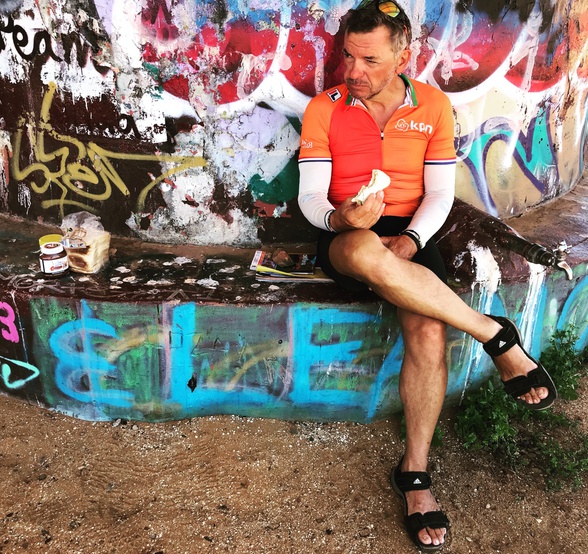
200 Mile Watertanks
There used to be 8 huge water tanks for travelers between Carnarvon and Geraldton. Today, most travelers are equipped with >100 liters of tanks in their vehicles, so the need for such water tanks along a route through the outback has been eliminated. That of course does not apply to cyclists, who can carry a maximum of 12 liters of water, which is sufficient for no more than 1 day. However, the water tanks have been removed, except for these 2 thank at “200 miles” from Carnarvon, as a reminder of the old days. A good place to refill, rest (you can sit down!), a peanut butter sandwich and enjoy the shade. And the tanks have since been turned into a work of art.
During the third stage’ 121 kilometers to the Galeena River rest area, finally Harry’s morality is deteriorating considerably and Roelie’s “tank runs empty and legs full”. But first, after about 30 kilometers, we have a nice meeting with … Donna and Nic! Donna and Nic are our benefactors, the Warmshowers hosts and owners of the Coral coast tourist park in Carnarvon, where we were allowed to stay for three nights free of charge. They were on vacation and we were sorry that we couldn’t meet them, but now we come across them on the road. Donna in a 4WD + trailer with baby and a dog who only understands Spanish and Nic on a large ‘all terrain’ motorcycle on which he has already driven from Singapore to London. We are offered sweets and a cold can of soda and we mainly talk to Nic, because Donna is busy rocking the baby back to sleep. It is a short meeting, but it is immediately clear to us that we are dealing with an interesting couple, full of travel experiences (on horseback through Mongolia, on a bicycle through South America and around Australia) and with a new plan: around the world to sail!
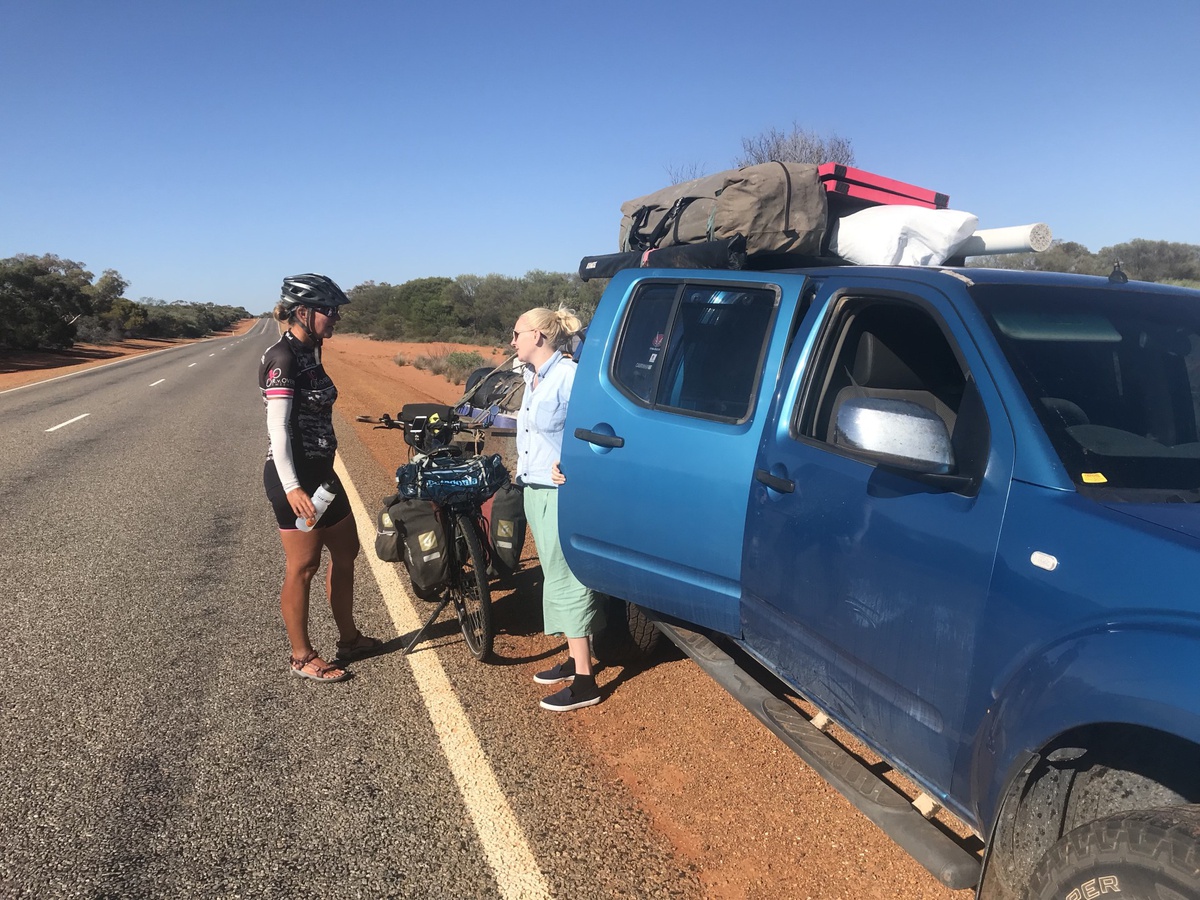
And what about Harry’s morality? Oh yes, Harry finds the prospect of another eight to ten hours struggling against the wind, with the aim of reaching a ‘free camp’ spot or parking area without any facilities (except a pit-toilet), trying to hammer your tent pegs into the pavement without smashing them and then ‘washing’ yourself with a few wetties, not nice. He even speaks the sensational words: “I don’t feel like it anymore”, fortunately he quickly adds that he means today. Due to the strong headwind we have been releaving each other every five kilometers since Carnarvon. This stage we will eventually go to every two kilometers and especially Roelie has a very hard time. That “helps” Harry a bit to get rid of his feelings, because as always: if one person has a hard time (mentally or physically), then the other helps.
Fortunately the stage unfolds to something beautiful in the last kilometers. We have already seen subtle small changes in the landscape: wild flowers in particular are becoming more numerous and more colorful and some clouds appear. After – emotionally – a climb of 100 kilometers we have arrived at an altitude of 300 meters above sea level and we see a gigantic green surface on the left through the bush. It looks like a “mindfuck” and our brains want to register something different than what we see. “It is a fence with green foil,” Roelie shouts, but after a while we realize that it is a field with grain or something.
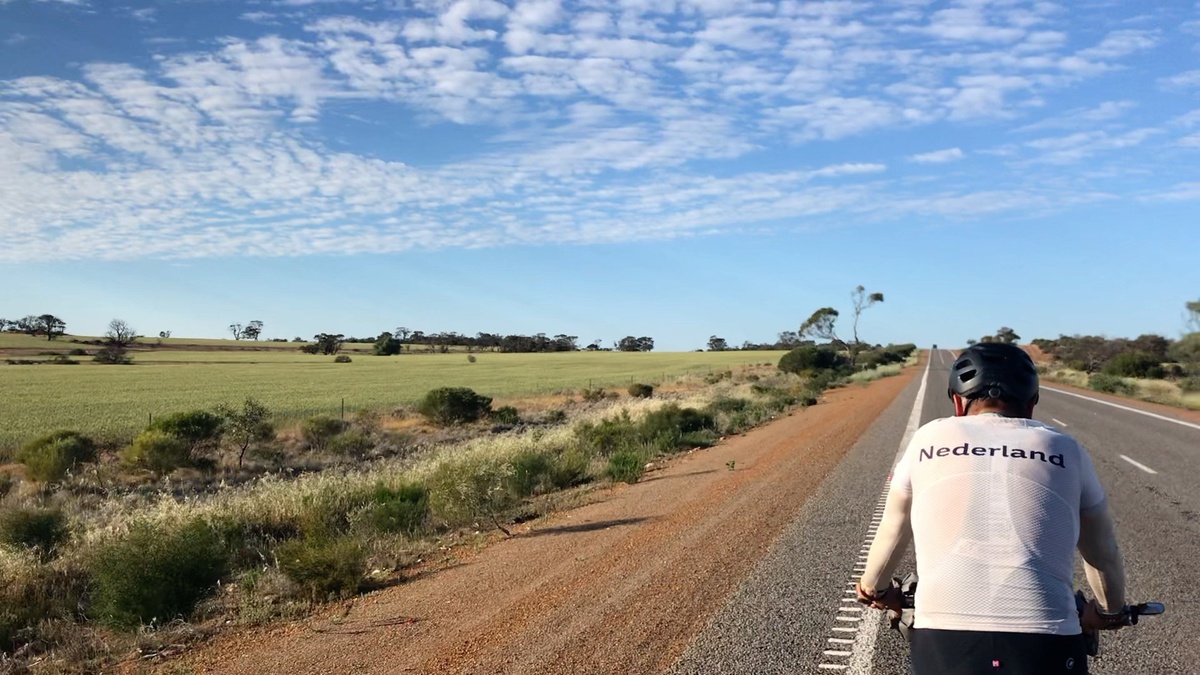
Suddenly we can also start a real descent; still with that strong headwind so we are not going fast and have plenty of time to look around and especially ahead. We see a landscape that is totally, but really totally different than the landscape of the outback: rolling hills with grain fields and rapeseed, separated by wooded banks. The trees, shrubs, fields and grass are fresh green and not withered. It seems that we are cycling into the “shire of the Hobbits”. Magnificent! Not long after this descent we turn into the Galeena River rest area. There is water in the river with associated flora and fauna. The rest area itself appears to be popular and the best places are already occupied by campers, caravans and other recreational vehicles. As we cycle up the terrain, we are directly approached by Larry, of course with the well-known words: “we passed you today (and a few times earlier this month)”. Larry says his caravan is parked along the riverbank, but we can still pitch our tent in front of his caravan. The place turns out to be magical. The only loss – there is no picnic table – is solved by Larry and he sets up a table for us and gives us two stools. On the table his wife puts a nice glass with a little candle light and Harry gets an extendable rake to do some “landscaping” before the groundsheet is unfolded. And to make us completely happy, our water bags are filled with drinking water again! The stools, by the way, do not feel really comfortable: our sore bottoms need to be spared. Larry sees the painful grimace on our face and conjures up another folding chair. And when Roelie enters the somewhat slimy water of the stagnant river to see if she could wash in it, she gets a bucket from Larry to wash down a little along the waterfront. What a great guy.
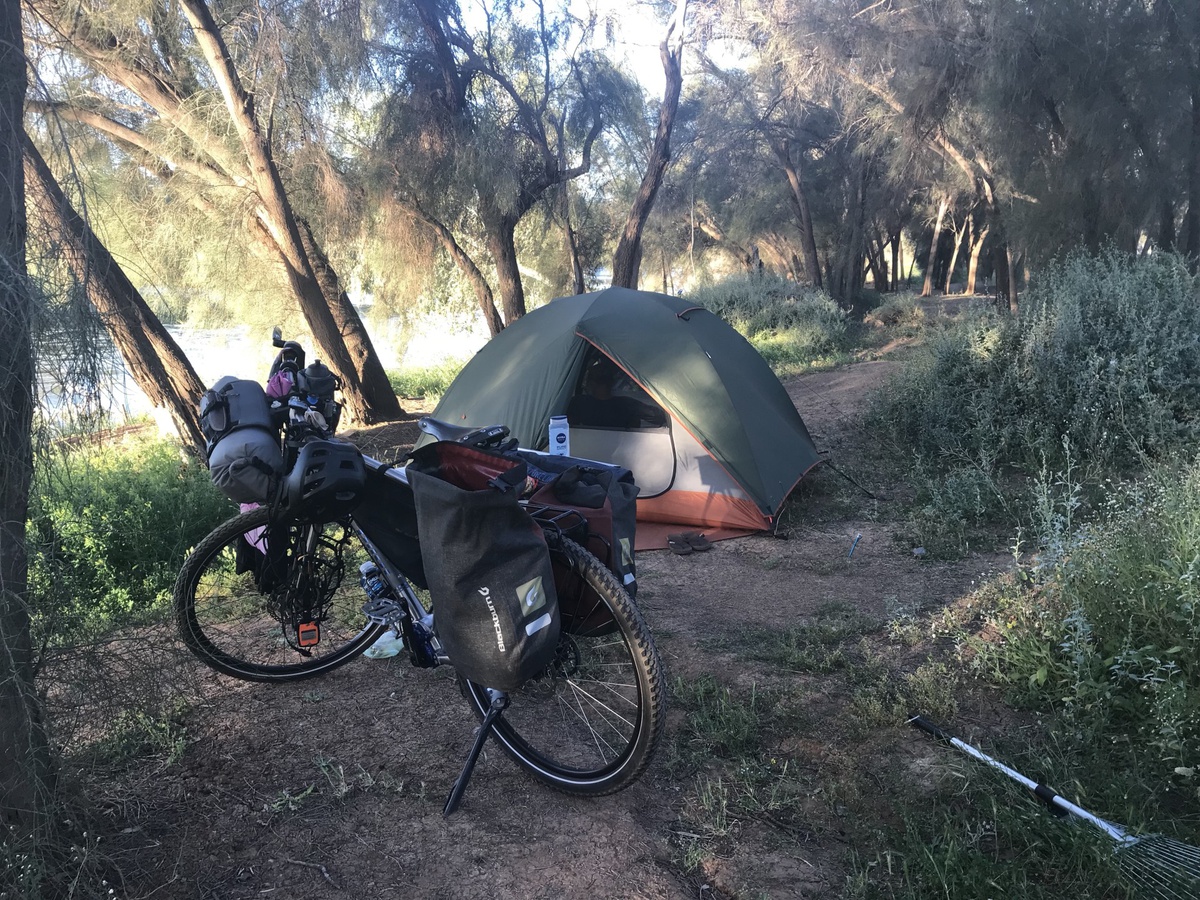
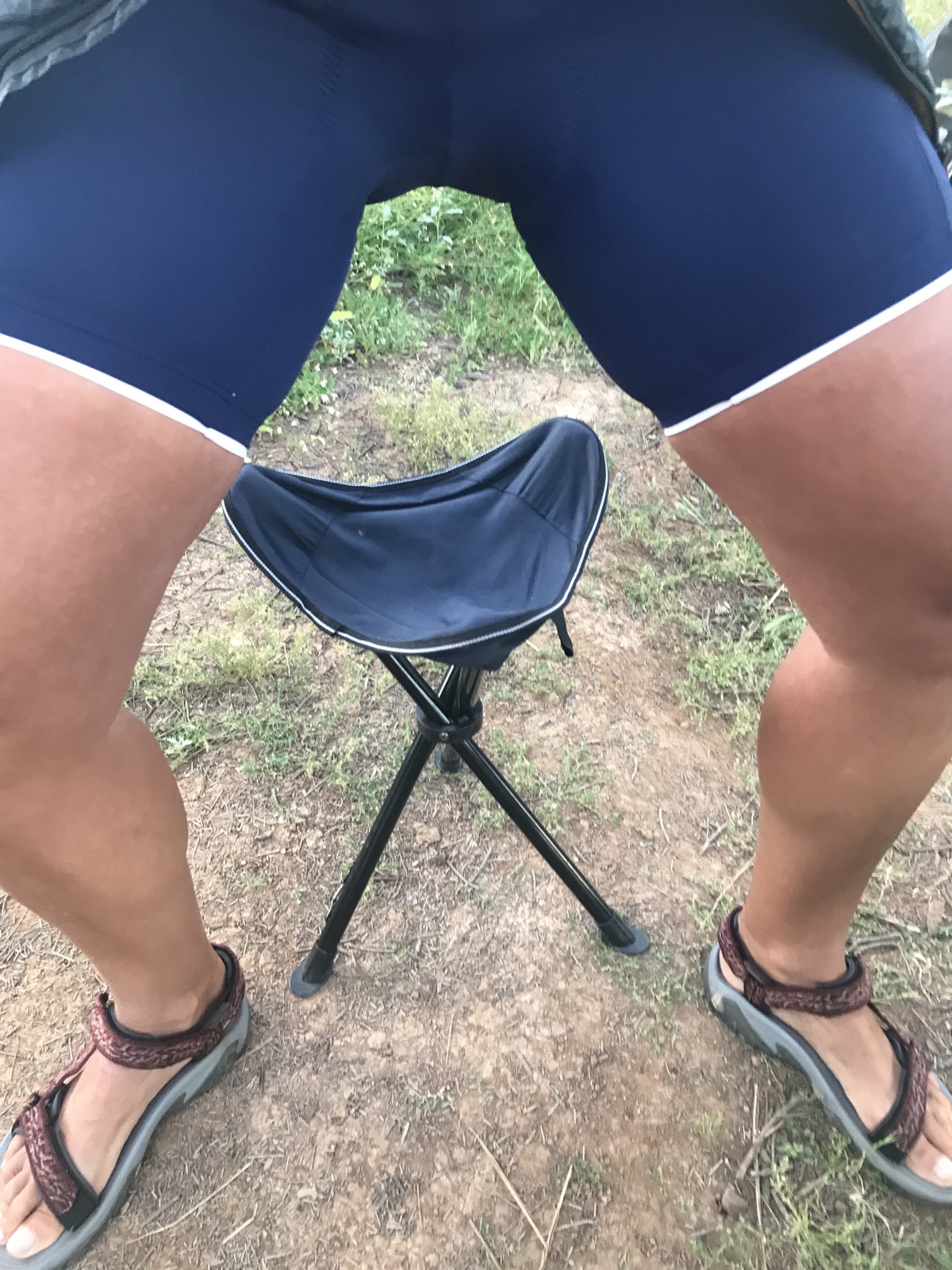
The next day we cycle further through this Hobbit land, or Teletubbie garden, or golf course complex. Enough superlatives. The green landscape around us is undulating and always offers great views. The fields with mainly rapeseed and grain and the meadows seem infinite and yet the landscape does not appear large-scale and monotonous. Enjoying all that beauty, we come closer to Geraldton. Unfortunately the traffic and the number of road trains is increasing. The road offers us little room to divert. The wind gradually shifted to the southwest during the day and therefore comes from our right. We now know from experience that this can lead to dangerous situations when a road train approaches us. Invariably the blow of the air displacement that such a collision causes is enormous for us cyclists: first comes the literal blow that tries to whack us off the asphalt (which sometimes works) and then the wind displacement in the wake of the road train that get our speed out of it. In fact, we can only conclude that it is too dangerous for cyclists on such roads. Road trains and cyclists, on the same piece of asphalt without a cycle path or shoulder, do not go together. Anyway, Australia, arrange that after we have left again.
After the physically and mentally demanding part from Carnarvon to Geraldton we consider to have a rest day, but we have a better idea: we first sleep a bit longer in the morning, then go to the Geraldton museum and then cycle a relatively short leg of 80 kilometer to Port Denison under the town of Dongara. Hey, wait a minute, time out … are you talking about a museum visit? Yes, we hear nice stories about this museum, which focuses largely on the objects of and the story behind three shipwrecks of the Dutch East India Company that lie here off the coast. And yes, the museum is practically on the route. And yes, the museum is still free. And yes, we do take a short route. And yes, we can still leave the bicycles with all luggage in sight of the reception. So anyway…
It so happens that the two world cyclists Harry & Roelie, who have just cycled past every museum, enter a museum for the first time on day 444 of their adventure. The museum reveals the stories of three large ships of the VOC fleet: Batavia, Zuytdorp & Zeewijk. The history of the Batavia in particular comes across as a blood-curdling and psychological film scenario: drama, tyranny and heroic acts.
VOC flagship The Batavia
On the first trade voyage from the Netherlands to Indonesia, on June 4, 1629, the ship ran aground on the Australian coast. Chief merchant and in fact the big boss on board, Francois Pelsaert, evacuates most passengers and some supplies to a nearby island. People are also left behind, mainly because the ship had not completely collapsed and the wealth in the hold had to be protected, but mainly because most of them could not swim. No drinking water was available on the evacuation island and people soon die of thirst before the first rain falls and provides temporary relief. Concerned about this drinking water situation, Pelsaert uses the accompanying longboat (which by the way was not long at all) to sail with 42 people to Jakarta, which he ultimately succeeds. In Jakarta they are not at all happy with the loss of the ship and the wealth and he is sent back to collect the valuables.
In the meantime, about 200 people are left behind, including merchant Jeronimus Cornelisz who cannot swim and first chooses to stay on the wreck with 70 others. After a few days the ship falls prey to the waves and 40 people drown. However, Cornelisz does reach the island and he is greeted as the highest in rank now that Pelsaert was on his way to Jakarta with a number of officers. Cornelisz takes the lead and is rapidly emerging as a murderous dictator who establishes a true horror board. Many people (including women and children) are killed under his reign of terror. A small group flees from the massacres to another island under the guise of searching for water and manages to survive there, because there indeed appears to be a supply of drinking water. Cornelisz has made several attempts to conquer this island by force or ruse, but ultimately fails.
When Pelsaert returns to the islands and the wreck of the Batavia after 4 months, he saves cargo, saves the survivors and after hearing what happened, Cornelisz arrested. Cornelisz is sentenced to chopping off both hands before being hanged.
Of the 341 people on board, only 116 ultimately survive.

After the museum visit we continue our bike ride to Port Denison, but not before we’ve had a quarter pounder at the local McD. With this “fuel” in our body and a light wind in the back we reach Port Denison without much effort. A little more than 350 kilometers to Perth and we still have four cycling days until Saturday afternoon. We look at the accommodation options and also take a look at the weather forecast again. The weather forecast shows a north-northwest tailwind for the day of tomorrow (yes!) and for the next days a headwind straight from the south (oh no!). We decide to make maximum use of the wind tomorrow and to get as far as possible, perhaps even to Cervantes, 160 kilometers away. The day after tomorrow we can then do a shorter stage, approx 90 kilometers to Ledge Point.
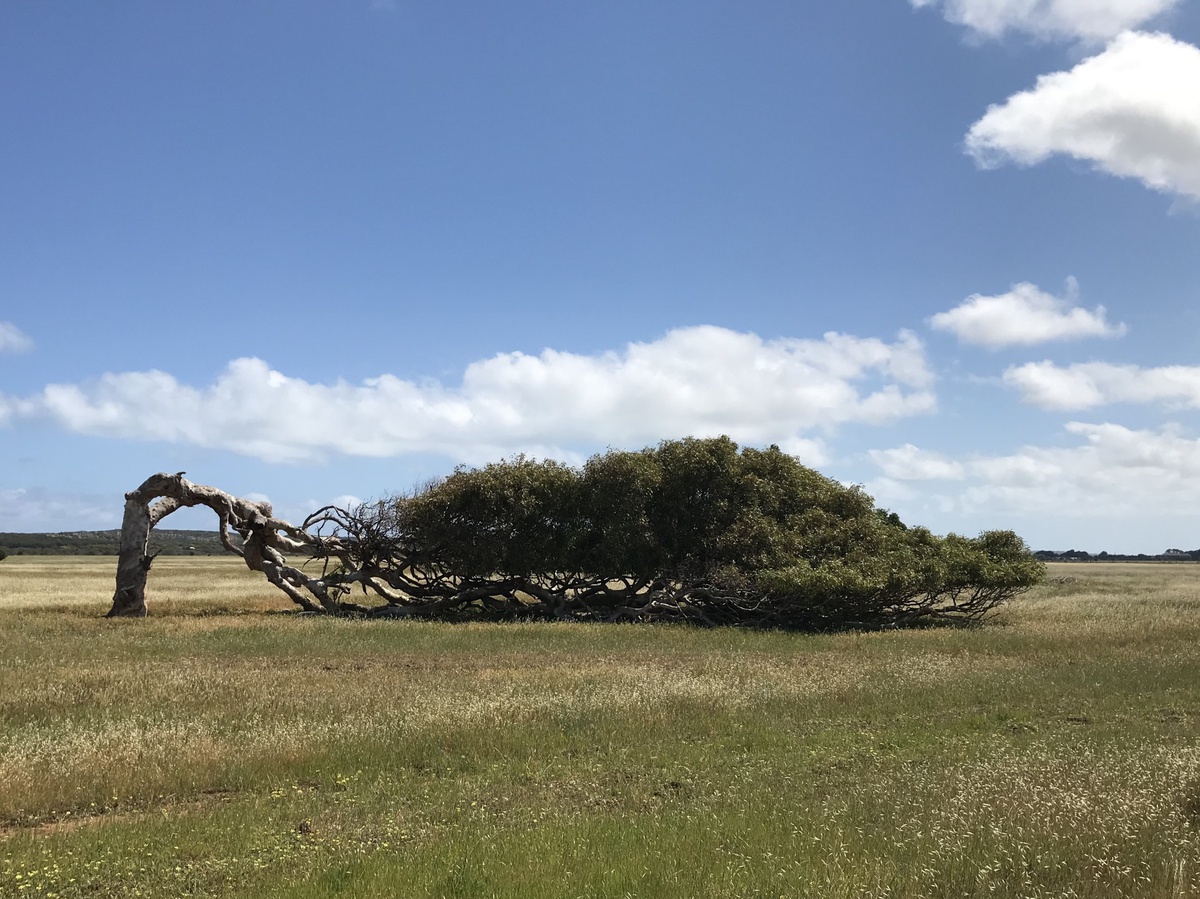
From Port Denison we first cycle on a quiet road through a beautiful dune area. It is still early and we spot several large living and hopping kangaroos. Then we still have to cycle 20 kilometers on the highway, which luckily is not that busy at this early hour. We notice that the wind indeed comes from obliquely behind and helps to develop a speed of well over 20 km/h. So after one hour we turn onto the beautiful Indian Ocean Drive, which follows the coast. The road is much quieter than the highway and there are no more road trains. Above all, we enjoy the many beautiful views of the Indian Ocean and beautiful dunes. The wind remains kind for us today and we decide to continue until Cervantes. After 100 km, however, we are overwhelmed by rain showers and the temperature drops dramatically. We are going to look for our raincoats that have to be somewhere deep in one of the panniers; we have not used them since India. Visibility is getting worse and it becomes dark and that is why it is wise to put on the fluoridating jackets. When we reach the village of Jurien Bay after 130 km it is already dry again and the sun is trying to make the best of it. However, it remains on the cold side and the jackets stay on. The village has a large supermarket and we decide to do some shopping there for the last days up to Perth. When we bridge the last 30 kilometers to Cervantes, the wind picks up even harder and there are also gusts of wind. The clouds that are being driven by wind from us to the Indian Ocean are becoming more threatening and the temperature is falling even more. Only the last two kilometers we have to go westwards against the wind and get a taste of what will await us the next day.
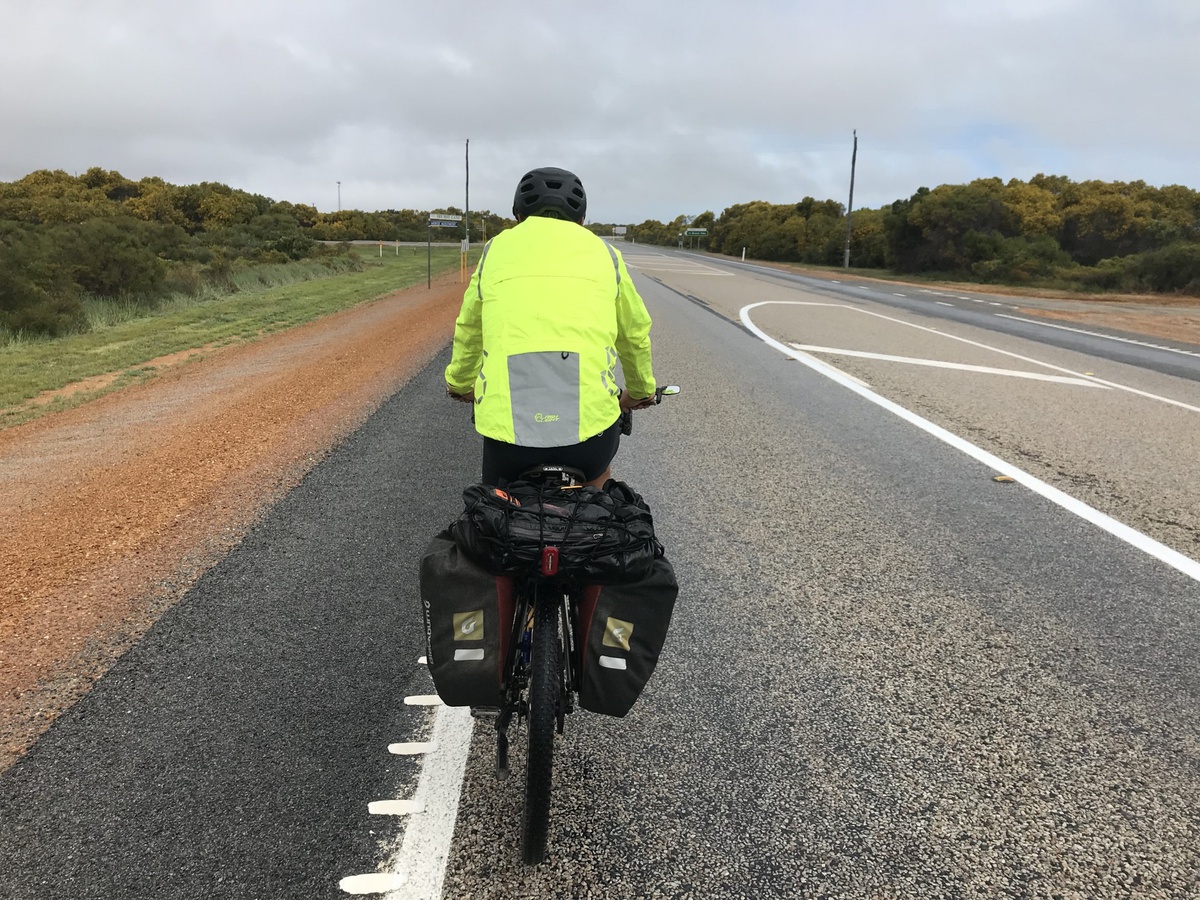
The Cervantes Holiday Park is quite expensive and does not offer nice places for tents. Moreover, these places are unprotected and therefore full of wind that hits the park hard from the sea. When we arrive we see four Chinese girls struggling with their tent that they are trying to pitch in the strong wind. Despite that wind, we are not delayed in setting up, practice makes perfect, so to speak. All the pegs, including the spare pegs, are used to keep the tent on the ground. We can only use one entrance, the other is full of wind and cannot be opened. Due to the cold, for the first time in a long time (was it the Himalayas in Nepal?), Harry is once again suffering from “dead fingers”, a side effect of one of his medicines. A hot shower is great welcome and when we come back from this benefit, we see that the Chinese girls are almost done with their struggle. We quickly enter the camp kitchen for shelter and warmth. The kitchen here is huge, modern and fully equipped. It seems that nobody wants to cook at the camper or caravan, so it gets pretty busy.
So tomorrow worst weather is waiting for us: strong wind (approx. 40 km / h) opposed to strong gusts of wind (> 65 km / h). When we wake up we know that the prediction is true in terms of wind, and even the rain showers of yesterday afternoon and tonight do not disappear. We have already decided not to fight against the wind in the hope of getting to our next place to stay, 90 kilometers away, and turn around on our sleeping mats once more while the rain flies horizontally against the tent. We will stay another day on this expensive caravan park and will update this blog and our video “Darwin to Perth”, among other things. Hopefully the weather becomes a little better later this day, because our cycling clothing is still wet and stinking in a bicycle bag. When we get up, we put on our down coats and walk to the camp kitchen. After a few minutes Roelie jumps up in shock; a spider runs over her hip with a red spot on the lower back and is then out of sight. The spider falls to the ground after some nervous waving and jumping and we look at it: yep, it looks like two drops of water on an extremely toxic Redback. Just to be sure, we check and the internet and Aussies confirm it: it is a Redback! Harry does not want to kill the beast and lets him walk on our plastic cutting board and puts it outside. Still a weird feeling: to give a possible deadly (without antidote and quick treatment) animal freedom. But anyway: live and let live (except flies, they must all die!).
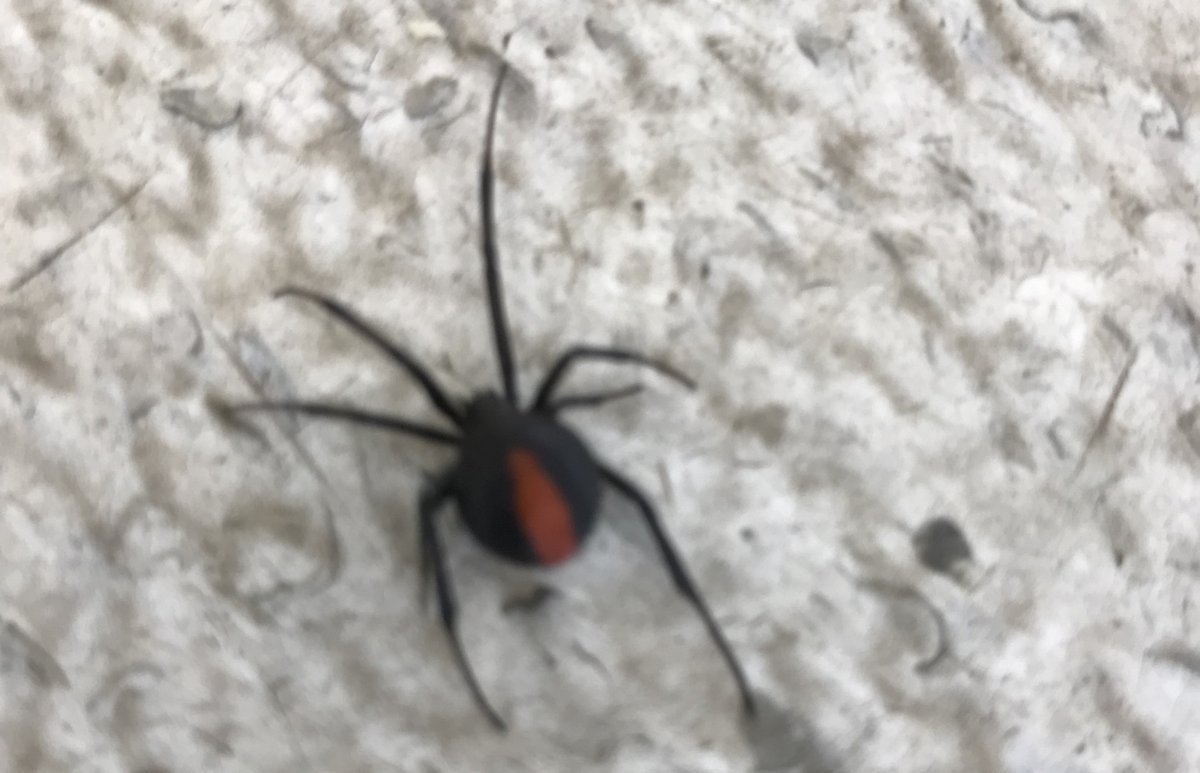
The decision to stay an extra day in Cervantes appears to be the right one. It is turbulent all day long: gusts of wind and gusts of rain and otherwise strong, harsh wind from the south. We spend the whole day in the luxury camp kitchen of the caravan park. Even at night it keeps raining, although the wind seems to be decreasing. We are quite surprised that the tent is almost dry when we get up. The strong wind also has its advantages. It is also very cold when we break down the tent while we chat with the two Dutch gentlemen, who parked their 4WD with rooftop tent next to us last night. They do the same route from Darwin to Perth and start their last stage today.
So it’s “only” 90 kilometers to our destination of this day, Ledge Point, and we are in no hurry to leave. In addition, it is therefore cold and that fact does not really get us moving. For the first time in a long time, probably Georgia, we put on our leg pieces and search for our gloves. Completely dressed with even our down jackets, we start this cycling day. Unfortunately the wind is still strong and still from the south. The short stage, for our Australian standards, will be a tough one again. But it remains dry and after about 20 kilometers we have worked ourselves up in sweat enough to be able to put the down coats back in a bicycle bag, but we keep the gloves on.
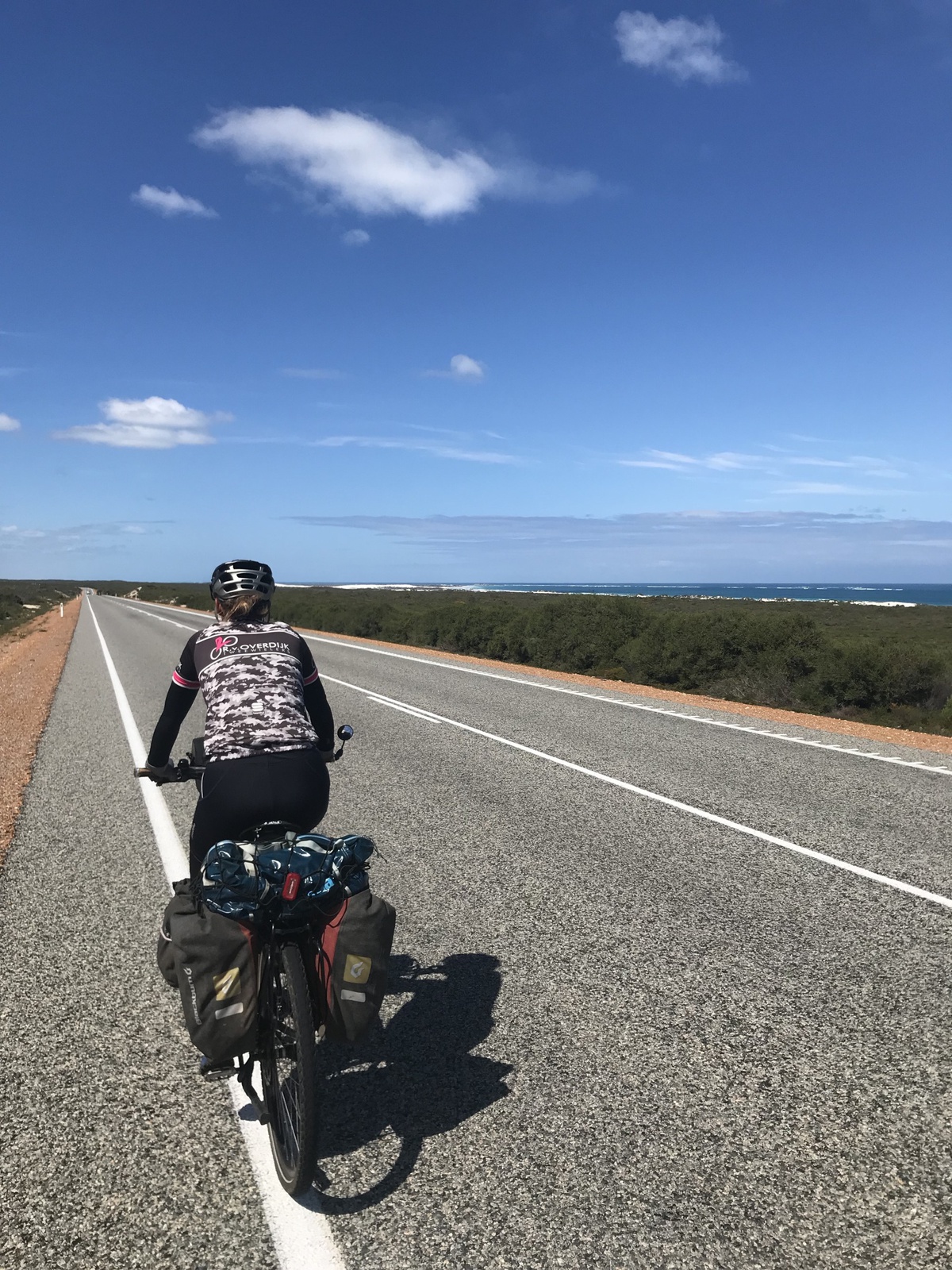
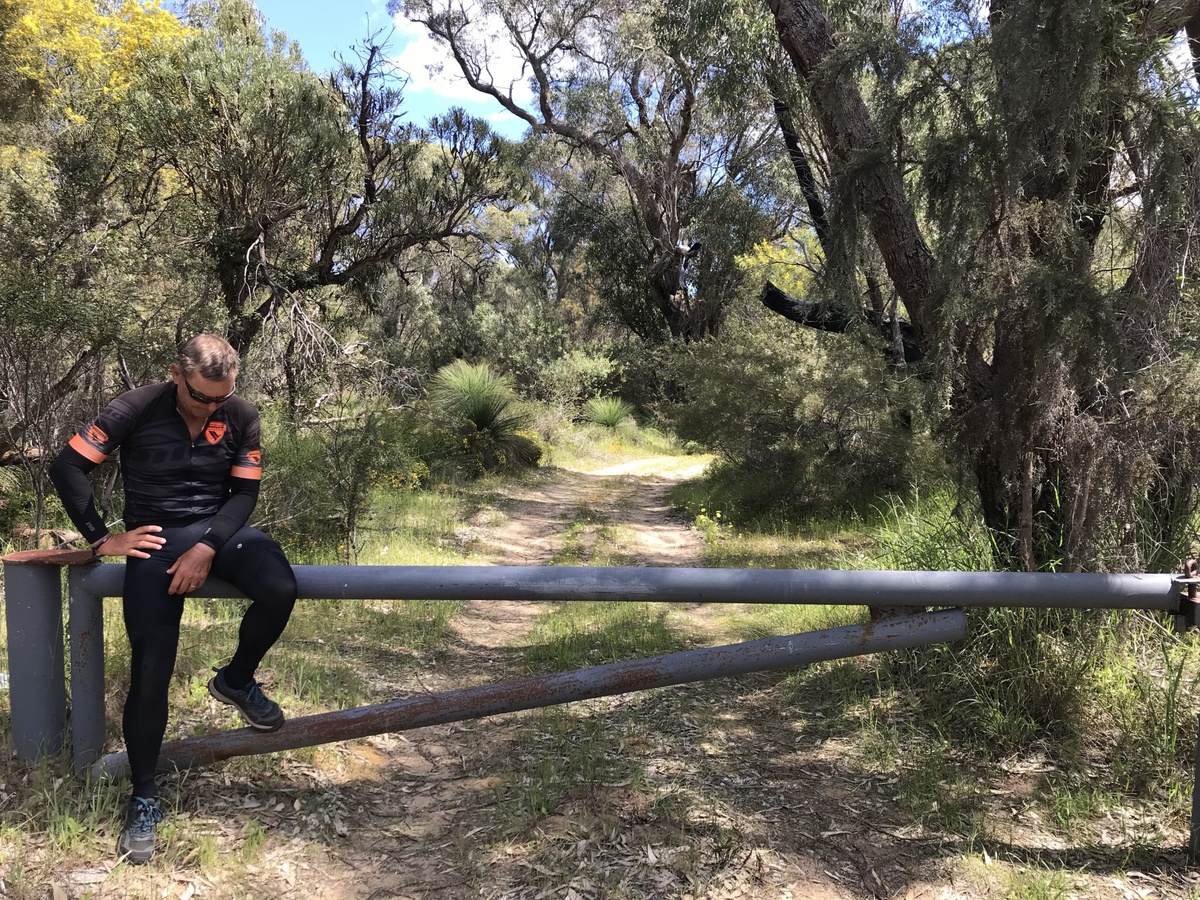
To reach the resort of Ledge Point we have to cycle a bit through the dunes. We are assigned a lonely place on an otherwise empty tent field. In the evening and next morning we try to finish all the left-overs in our food bag, because hopefully the next day will take us to downtown Perth, from where we will catch the train to Mandurah, to Harry’s auntie Mary. The very last camping night between Darwin and Perth will be the coldest. Later in the night we both no longer have enough of our sleeping bags as a comforter, but we have to zip them up. That too was a long time ago, for the last time at almost 2000 meters in the Turkish mountains.
We get up extra early, because the center of Perth is still 120 kilometers away. The metropolis of Perth is a long-stretched city with many suburbs. Especially from north to south the city extends over dozens of kilometers. The wind is still strong and we keep the idea in mind that in the north, in Joondalup, we can take the train to Mandurah. That would certainly save 25 kilometers. The road is also quite boring while we expected that we would come across a coffee shop, gas station or something similar so close to Perth, where we could quietly enjoy something tasty and regain strength. Although the road is very busy, it just remains empty alongside the road. The headwind, in combination with the traffic on the road and the absence of a rest place for a break makes the Joondalup option more and more plausible. But if we turn onto a neat cycle path with 37 kilometers to cycle, which promises to take us all the way to the heart of Perth, we know for sure: we will of course cycle all the way to the (real) end, to the center!
We finally cycle into the old, historic part – surrounded by a few skyscrapers – and on this Saturday afternoon we immediately get to know the cozy nightlife area of the city. We think that we should finish the #darwintoperth, the route of almost 4,500 kilometers, in a worthy way and we celebrate that with a beer at an Irish pub. Immediately afterwards we take the luxurious and super fast train to Mandurah, which is located about 70 kilometers further south. 45 minutes later, the train sweeps into Mandurah station. Fortunately, auntie Mary does not live far from the station: when we ride her driveway, it is just getting dark. What follows are three wonderful days with family who live so far away and are now very close.
